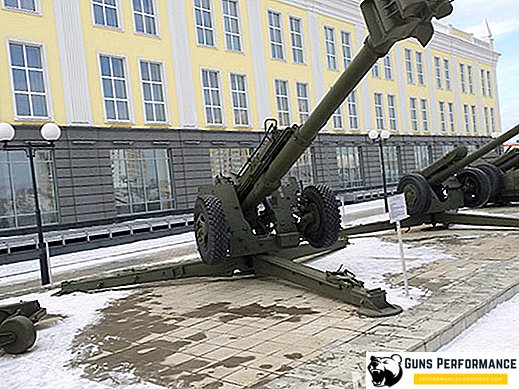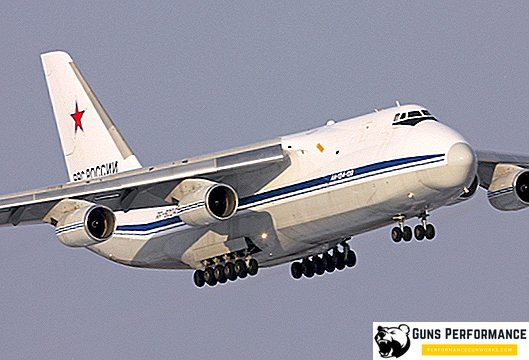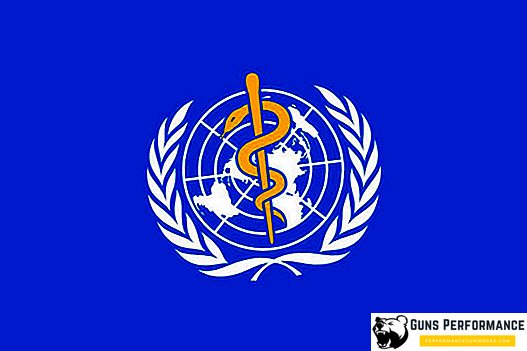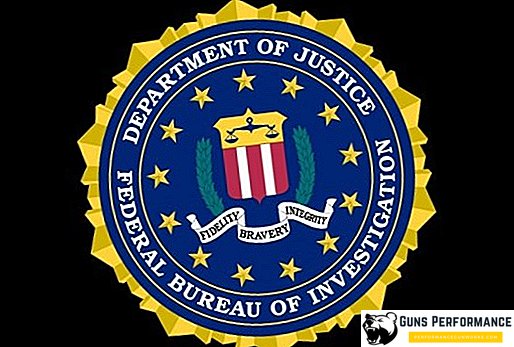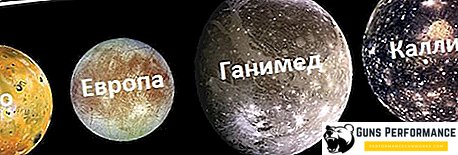One of the most powerful people vested with exclusive powers in modern sovereign international law is the Pope. The uniqueness of this position lies in its deep historical sense and status. The person who holds this position is at the same time the supreme Catholic pontiff and the Head of the Holy See, and also serves as the sovereign of the city-state of the Vatican. The position of the Supreme Roman Pontiff was established during the time of the Roman Empire and is considered to be the most ancient political figure to date.
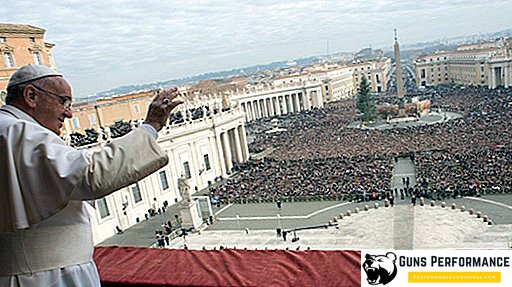
In different historical periods, the status of the head of the Catholic Church was ambiguous. In the first years of its existence, the papacy fully felt all the delights of persecution and persecution to which the followers of the teachings of Christ were subjected. Many pontiffs from among the first popes were brutally tortured by pagans, others were constantly undergoing physical pressure from sovereign sovereigns of the then Europe. However, despite all the difficulties, the papacy was able to survive not only all the struggles of Christianity against paganism, but also contributed to the establishment of Christianity as the main religion on the European continent.
The essence of the papacy, the rights and obligations of the pope
The Pope, he is the Monarch and Sovereign of the Holy See, the living and real head of the Catholic Church. The special status of the pope is determined by the church hierarchy. In fact, it is the successor of the Apostle Peter, the first Roman bishop. The authority of the pope and his sovereignty as head of the Holy See has no territorial restrictions. In addition to church authority, the supreme pontiff is the head of the city-state of the Vatican, in whose territory the Holy See is located.

The meaning of the papacy is clearly seen from the titles that the pope bears:
- vicar of Christ;
- Bishop of Rome;
- successor to the prince of the apostles of St. Peter;
- slave servants of God;
- Great pontiff;
- the supreme high priest of the Universal Church;
- Primate of Italy;
- Archbishop and Metropolitan of the Roman Province;
- sovereign of the city-states of the Vatican.
The main part of the titles belonging to the Pope has a spiritual meaning, defining the meaning, place and role of the pope in the Christian world. With regard to authority, the spiritual and legal authority of the supreme pontiff extends to the entire Catholic Church, to the administrative structure of the church community. In international law, the pope is an independent subject, his spiritual, legal authority and sovereignty can not be limited to secular power. The main duty of the Pope to observe the Christian faith, to promote its approval and dissemination. The pope is not solely responsible for matters of spiritual morality and faith. The Supreme Pontiff administers the Catholic Church.

From the point of view of Catholicism, the pope is a direct descendant of the Apostle Peter, to whom Jesus specifically entrusted his service to the Lord. The right to be a high priest is successive and is transferred to a spiritual person who deserves this title. As a rule, the vicar of Christ on Earth is elected from the highest ecclesiastical members of the bishops' collegium (conclave). With the election of the pope gains the full supreme ecclesiastical and administrative authority, becoming the absolute monarch of the Holy See. Decisions, decrees of the High Roman priest have the status of law and are not subject to appeal. The competence of the Pope is the right of legislative initiative within the framework of the Catholic Church, the right to interpret the decisions of the Ecumenical Councils, to make changes to existing edicts and to cancel the effect of previous decisions.
The pope defines church discipline by issuing canons that are compiled into canonical reference books and codified. Performing administrative functions, the supreme Roman pontiff is engaged in the assignment of church dignity, carries out appointments to the position, gives orders within the framework of the church administration system.
The meaning of the papacy is displayed in the emblem of the Vatican city-state. It shows all the papal regalia, symbols and insignia.

Crossed keys symbolically display the keys of the Apostle Simon Peter. The silver key means the connection of the authority given by the Church with the right to allow (the golden key) to rule in the name of the Lord. The tiara, the triple crown, symbolizes the three main functions of the papacy:
- to be the supreme shepherd for all Christians;
- be the supreme teacher;
- to be the High Priest.
The golden cross, which crowns the tiara, marks the dominion of the Lord, Jesus Christ. Tiara was entrusted to the forehead of the pontiff at the time of the papal coronation, a solemn ceremony resembling the inauguration of the head of state.

The history of the formation of the papacy
About the first bishops who led the first Christian communities, there is extremely scant information. In the archives of the Vatican are stored ancient manuscripts dating from the I-II century, which mention the spiritual person, bearing the title of high priests of Christians. The very institution of the papacy appeared much later, at the end of the 4th - the beginning of the 5th century. The papacy was formed within the Roman province, where the Roman episcopate was created. The privileged position of the Roman bishops was explained by the fact that it was in Rome, in the very center of the Roman Empire, that there were lands belonging to the Christian community. Subsequently, already bearing the title of popes, the Roman bishops expanded their possessions. In fact, as early as the 6th century, Rome became the main center of the apostolic authority of the Catholic Church.

The final designation of the papal throne as a sovereign ruler occurred in the eighth century, when the king of the Franks, Pepin the Short, bestowed a Roman province on the Roman episcopate. Rome with the adjacent territory becomes the Papal States - a state administrative entity with a universal status. Now the pope represented the highest church authority and at the same time was a sovereign secular ruler.
As for the official title, then all the priests with the right of blessing were called the pope during the period of the approval of the Christian doctrine. Later, during the period when the papacy was established as the spiritual center of Christianity, the title of pope applied to all bishops. After the division of the Christian church into the Roman and Constantinople, the order of appropriation of papal dignity also changed. With the design of Rome as the chief episcopate, the papal dignity was appropriated only to the Roman or Alexandrian bishops. In Constantinople, there was a proto-pop, the main pontiff of the Constantinople Orthodox Church.

Until 1059, the election of the pope in Rome was carried out by a joint meeting of secular and spiritual nobility. The end of this practice was laid by the Lateran Council, at which it was decided to elect the pope by the assembly (conclave) of cardinals from among the first bishops of the Catholic Church. With the election, the Pope publicly announces under what name he will head the Catholic Church. If in the history of the papacy there were already persons with similar names, then a serial number is added to the selected name. From this moment on, the pope has a throne name that he carries throughout his pontificate.
The tradition to change worldly names began in the early Middle Ages, when ancient Roman and ancient Greek names were in use, corresponding to the pagan cult. The first pope who changed his worldly name Mercury was John II, who occupied the Holy See in the 6th century. Officially, the order of the name change was never regulated by anyone, however, this rite from the XI century becomes traditional in the ceremony of electing the pope. For the entire subsequent history of the papacy, only two High Priests did not change their names: Adrian VI, in the world of Adrian Florence and Marcello Cervi, who became Pope Marcellus II.

The election of the Head of the Holy See did not always proceed smoothly and in accordance with the established procedure. The Holy See has often become hostage to the political situation prevailing in Europe. In the early Middle Ages, quite often the powerful monarchs of Europe used the Catholic Church as a convenient tool for social and political manipulation, making the pope's secular power hostage to a complex military and political situation. This state of affairs vividly illustrates the period of the Middle Ages, when the papacy fought vigorously for the supremacy of spiritual power over secular rule. Despite significant progress in this direction, in contrast to spiritual power, the pope’s sovereignty was constantly under threat.
Each of the political forces sought to subordinate to their influence the papal throne, bringing a split into the unity of the Catholic Church. The result of this policy is the practice of electing the anti-papa. There are many cases in the history of the papal throne when spiritual power was divided among themselves by several people who bore the title of Supreme Roman Pontiff. The issue of electing the head of the Holy See could be decided in different places, with the participation of various secular people and clergymen. The right to bear the legitimate title of the High High Priest was usually reserved for the clergyman whose supporters won a political victory. Despite the fact that in medieval Europe the existence of anti-pop was common practice, the official Vatican does not recognize their existence.

In the official register are listed only legitimate dad, each of which has its own sequence number.
The most famous personalities in the history of the papacy
The whole history of the papacy is closely connected not only with the process of the formation and affirmation of Christianity, but also in many respects reflects political events that to some extent affected the international structure. The existence of the institution of the papacy can be divided into the following periods, which reflect the political situation on the political map of the world of that time:
- The pre-Nicene period conditionally takes the II-III century - the time of the spread of Christianity until the accession of the emperor Constantine;
- the period of the establishment of Christianity as the state religion of the Roman Empire (313-493);
- The Ostrogothic period - the fall of the Roman Empire and the formation of the Ostrogothic kingdom (493-537);
- The Byzantine period of the papacy (537-752);
- The Frankish period falls on the whole century from 756 to 857;
- the era of papal humiliation by secular owners (1044-1048);
- the imperial era (1048-1257) - the period of the greatest prosperity and power of the papacy;
- the transitional period is the time of instability of the papal power (1257-1309).

From the time of the establishment and approval of the papacy as Head of the Catholic Church until 1309, when the Pope and his entire residence moved to Avignon (France), the Holy See was headed by 194 persons. The countdown comes from the Apostle Peter, who is supposedly the founder of the Holy See. In the period of the formation of the Christian faith, the Romans became the supreme pontiff. Eight people from this number represented the Greek dioceses. Three dads were from African provinces. Twice the Holy See was led by the French. One time, the head of the Catholic Church was the Syrian, German, and Englishman Adrian IV, who transferred Ireland to the disposal of the English crown.
In the pre-Nicene period, being a dad meant being subjected to persecution and persecution by the pagan cult and the authorities, so many of the supreme high priests died a martyr's death. Relative security and stability comes to the institution of the papacy with the emperor Constantine taking the throne of the Roman Empire, who gave Christianity the status of a state religion.

The first title "papa" began to use the Holy Syricius, the years of rule 384-399. With the period of his reign, the only of the decretals that have come down to us are associated. Of all the popes who became famous in history during this period, it is worth noting the High High Priest Leo I (440-461), who personally managed to convince Attila not to invade Italy. Pope Gregory the Second, who occupied the Holy See in 715-731, actively fought iconoclasm. In the Middle Ages, the sovereign monarchs of Europe often used force to assert their authority. So it was with Pope John XII, who was expelled from Rome by the troops of the Holy Roman Emperor Otto I.
According to historians and theologians, the most significant place in the history of the papacy is occupied by Pope Urban II, who discovered the era of the Crusades. This is his fiery speech at the Clermont Council in 1095 about the need to liberate the Promised Land from Muslims was the beginning of a mass military-political movement. In the late Middle Ages, Pope Gregory IX distinguished himself by entrusting the Inquisition to the Order of the Dominicans. The Roman high priest, Gregory X (1271-76), by his decree introduced the conclave, the council of cardinals, which is responsible for electing the pope, discussing important spiritual and administrative issues.

Papacy during the period of instability
The most controversial moment in the history of the papacy is the period from 1309 to 1377, called Avignon captivity. The increased influence of France in the European arena directly affected the institution of the papacy. As a result of the conflict that broke out between Pope Benedict XI and King of France Philip the Fair, the French bishop Raymond Bertrand received the title of supreme ruler of the Ecumenical Church soon. Rome, which was considered the cradle of Christianity in Europe, lost the status of the Holy City for almost 70 years.

The role of Pope Clement V in the history of the papacy is ambiguous. It was his submission that began the persecution of the Order of the Templars, which culminated in the complete defeat and prohibition of the Order of the Templars in 1312. Only Pope Gregory XI managed in 1377 to return the papal throne back to the Holy City.
The next period of instability of the institution of the papacy was the Great Western schism. For 39 years, several people claimed the papal throne. Each was supported by one or another political group, relying either on France or on the local rich Italian houses. The popes took turns meeting in the Vatican, then in Avignon. The end of the mess with the popes and the period of diarchy was laid by the Renaissance, which began with the arrival in 1417 on the Holy See of Martin V.

In 1517, the papacy is experiencing another crisis associated with the beginning of the Reformation in Europe. During this period, there is a religious movement of Martin Luther, who fought with the romanization of Christian dogma. Some of the popes who held a high position at that time made concessions, implementing cult management reforms and making changes to the rites system. During this period, there was a significant weakening of papal power both in Italy itself and on the periphery, in the countries of Central and Northern Europe. However, the Reformation quickly ended with the beginning of the Counter-Reformation — the period when the fierce persecutions of the followers of Luther’s teachings began. During this period, Europe plunged into the abyss of bloody religious wars. Across Europe, from France to the Carpathian Mountains, Catholics and Protestants destroyed each other. The times of turmoil and ferment in religious beliefs ended with the transition of the papacy during the Enlightenment (1585-1689).

One of the significant events of this period is the reform of the calendar, carried out by Pope Gregory XIII. This same High Priest first published the "Code of Canon Law."
The last in the history of the papacy period of instability was the era of revolutionary wars that swept the European continent. At this time, from 1775 to 1861, the Holy See was occupied by the popes, who had an extremely contradictory position in relation to the events taking place. If the High High Priest of Rome, Pope Pius VI, condemned the Great French Revolution, for which he was expelled from Rome by French troops, then his successor, Pope Pius VII, personally crowned Napoleon Bonaparte as emperor of the French. Napoleon virtually destroyed the papacy’s sovereignty, capturing the Papal States and turning the Holy See into its own episcopate.

The revolution that started in Italy led to the fact that in 1848 the Papal States occupied the Austrian troops. In 1846, the Holy See is occupied by Pope Pius IX. К его заслугам относят принятие догмата о непорочном зачатии Девы Марии, вынесение на утверждение I Ватиканского собора догмата о безошибочности папских решений и канонов. Папа Пий IX дольше всех в истории понтификата занимал пост Главы Католической церкви, с 1846 по 1878 год. В эпоху его правления Папская область окончательно утрачивает свои границы, войдя вместе со Священным городом в состав нового Итальянского государства. Рим становится столицей Королевства Италии. С этого момента светская власть римских первосвященников окончательно утрачивает свой статус.
Новое время
Только в 1929 году после Латеранского соглашения папа римский снова становится сувереном, вернув себе статус Главы города-государства Ватикан. В новой, современной истории папства было восемь Верховных понтификов, каждый из которых сумел оставить заметный след в христианском вероучении. Папа Павел VI в 1962 году собрал II Ватиканский собор, на котором рассматривалась необходимость обновления Католической церкви в связи с новыми реалиями современности. Результатом собора, который заседал в течение 3 лет, был пересмотр Кодекса канонического права, в который были внесены существенные поправки в отношении причин для отлучения от церкви и ряда других статей.

Новый канонический кодекс был утвержден и подписан в 1983 году папой Иоанном Павлом II. Этот Верховный понтифик, поляк по происхождению, в течение 27 лет оставался Главой Католической церкви. Его правление обусловлено ростом популярности папской власти в мире. При Иоанне Павле II Католическая церковь вновь обрела статус серьезной политической силы. Нынешний Верховный первосвященник Вселенской Церкви Франциск, аргентинец по происхождению, стал первым папой не европейцем. Его избрание состоялось 13 марта 2013 года после того, как его предшественник папа Бенедикт XVI отрекся от престола.

Резиденция нынешнего папы, как и его предшественников - Апостольский дворец в Ватикане. Здесь же находятся архив, библиотека Святого Престола, собор Святого Петра, Сикстинская капелла, другие культовые сооружения. Здесь же располагаются главные административные службы Католической церкви и учреждения государства-анклава.


